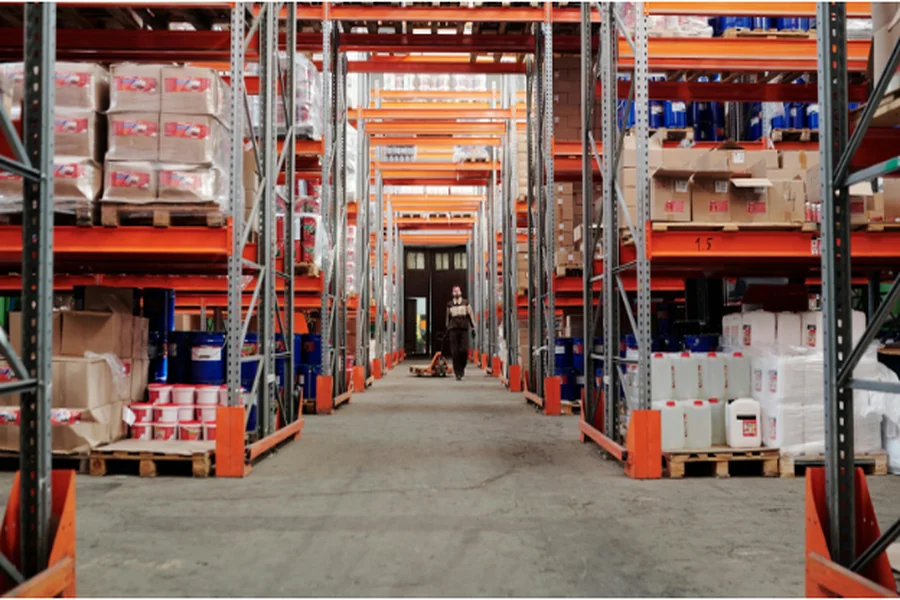In today’s fast-moving logistics industry, efficiency and adaptability are more important than ever. Third-party logistics (3PL) warehouse businesses are expected to handle complex operations, meet rising customer expectations, and stay ahead of competitors—all while controlling costs. One of the most effective ways to achieve this is through the use of modern technology. Specifically, software for 3PL warehouse business owners has become essential for streamlining workflows, reducing errors, and ultimately driving profitability. This article explores how 3PL software transforms warehouse operations and supports long-term growth.
Real-Time Inventory Visibility
One of the most immediate benefits of 3PL software is real-time inventory tracking. Traditional inventory systems often lead to discrepancies due to manual entry, delayed updates, or limited visibility across multiple clients. With 3PL software, every product movement is tracked automatically—across receiving, storage, picking, packing, and shipping.
This real-time visibility ensures that warehouse operators always know what stock is available, where it’s located, and how it’s moving. It reduces stockouts and overstock situations, improves accuracy in order fulfillment, and increases customer satisfaction. For 3PL warehouse business owners, this kind of visibility is critical to managing multiple clients with different SKUs and requirements under one roof.
Automated Order Management
Processing hundreds or even thousands of orders daily requires speed and precision. 3PL software simplifies this by automating order entry, processing, and fulfillment. Orders from eCommerce platforms, retail clients, or marketplaces can be integrated directly into the system, reducing the need for manual data entry.
This automation speeds up order turnaround times and minimizes the risk of human error, such as shipping the wrong product or missing deadlines. With automated workflows in place, staff can focus on more value-added tasks, improving both productivity and employee satisfaction. For businesses focused on supply chain optimization, automation is a foundational element.
Streamlined Client Management
One of the unique challenges for 3PL providers is managing multiple clients, each with their own inventory, preferences, and reporting needs. Modern 3PL software provides a centralized dashboard where warehouse managers can access all client information, performance metrics, and inventory levels in one place.
Many platforms also offer client portals that allow customers to log in and view their own data in real time. This transparency strengthens trust, reduces inbound support requests, and gives clients the tools to manage their own supply chains more effectively. For software for 3PL warehouse business owners, this multi-client capability is not just a convenience—it’s a necessity.
Accurate Billing and Invoicing
In a 3PL operation, billing can be complex. Warehouses charge for storage, handling, shipping, labor, and other value-added services. Manually tracking these costs is time-consuming and can lead to billing errors, which damage client relationships and hurt profitability.
3PL software automatically logs billable activities and generates invoices based on customized pricing rules. This not only saves time but ensures that warehouse operators get paid accurately and on time. Transparent, error-free invoicing contributes to healthier cash flow and stronger customer retention.
Labor and Resource Efficiency
Managing a warehouse efficiently means optimizing labor, equipment, and space. 3PL software helps track employee performance, forecast labor needs, and reduce wasted motion through intelligent routing and pick-path planning.
By analyzing historical data and real-time operations, the system can recommend adjustments to workflows that save time and reduce labor costs. These improvements directly contribute to increased profitability and make it easier for businesses to scale without overextending resources. For those focused on supply chain optimization, efficient resource management is a major advantage.
Seamless Integration with Other Systems
Modern supply chains rely on many moving parts—eCommerce platforms, ERP systems, shipping carriers, and accounting software. Effective 3PL software offers seamless integration with these tools to create a unified, automated ecosystem.
This connectivity means less time spent importing and exporting data, fewer errors from manual transfers, and faster response times throughout the fulfillment cycle. For 3PL warehouse owners, integration capabilities are essential to maintaining agility and delivering consistent performance to clients.
Enhanced Data and Reporting
Data is key to making informed decisions. 3PL software provides detailed reporting on everything from inventory turnover and shipping performance to client activity and labor productivity. These insights can be used to identify trends, pinpoint inefficiencies, and develop smarter strategies.
For 3PL warehouse business owners, access to reliable, real-time data improves planning and enables continuous improvement. Whether it’s negotiating better shipping rates, reallocating labor, or redesigning warehouse layouts, data-driven decisions are the backbone of profitable operations.
Scalability and Growth Support
As a 3PL business grows, so do the complexities of managing more clients, larger volumes, and diversified services. Without the right tools, growth can become chaotic and unsustainable. 3PL software is designed to scale with your business, supporting additional users, locations, and integrations without compromising performance.
This scalability means businesses can take on new clients, expand to new markets, or introduce new services with confidence. In a competitive industry, the ability to grow without operational bottlenecks is a key success factor.
Competitive Advantage Through Innovation
Adopting advanced software for 3PL warehouse business owners is more than just a tech upgrade—it’s a strategic move. Clients today expect faster fulfillment, real-time updates, and seamless communication. 3PL providers that invest in smart software solutions stand out from competitors, win more business, and retain customers longer.
By offering better visibility, stronger accuracy, and more responsive service, these companies position themselves as modern, trustworthy partners in supply chain optimization.
Conclusion
3PL software is no longer optional—it’s essential. It transforms warehouse operations from reactive and manual to streamlined and data-driven. For 3PL warehouse business owners looking to increase efficiency, cut costs, and scale sustainably, investing in the right software is one of the smartest decisions they can make.





